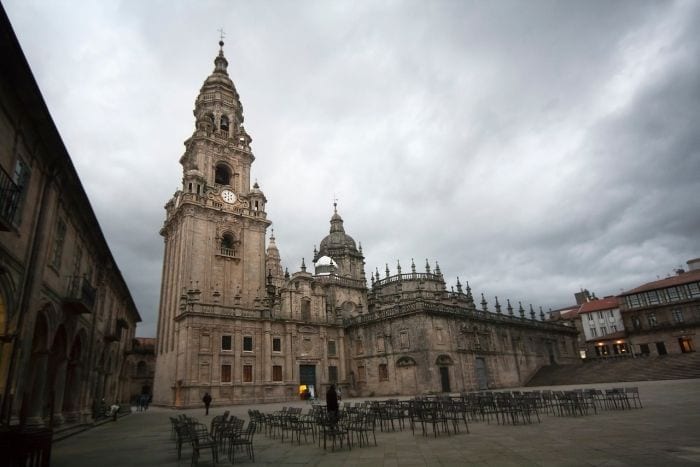It’s hardly surprising that, with Santiago de Compostela’s rich history and the countless people who have walked its streets, the city of the apostle is an endless source of legends, tales, and myths. One such legend comes from the silhouette that appears daily on one of the cathedral’s facades: the shadow of a pilgrim, clad in a wide-brimmed hat, carrying a staff, a gourd, and wearing a cloak. This ghostly figure is merely the result of a coincidence, where the shadow of a granite pillar in the Plaza de A Quintana casts its shape when night falls and the streetlights come on. However, there is no shortage of interpretations that venture into magical and supernatural realms, far beyond this natural and logical explanation.
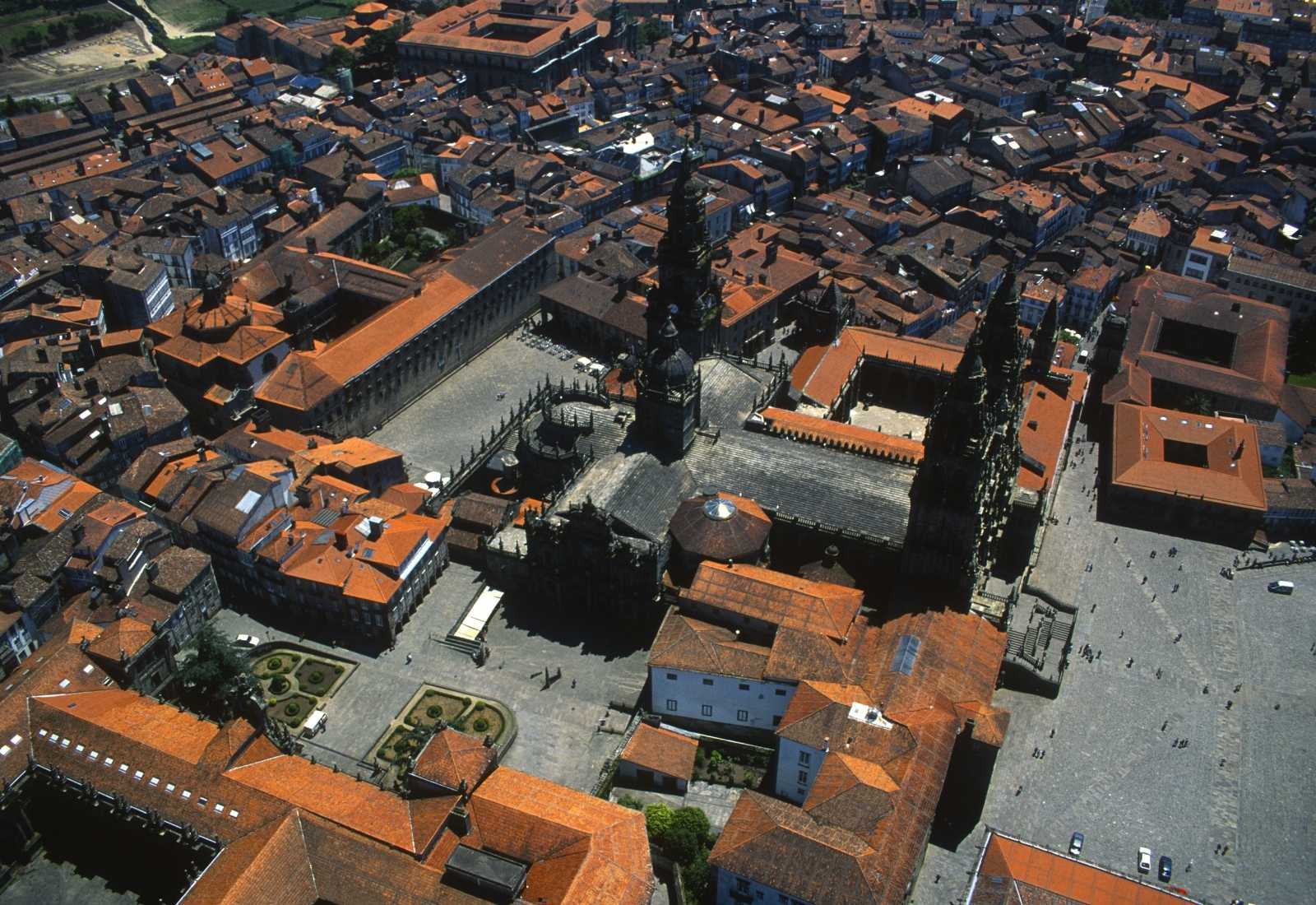
Aerial view of Santiago Cathedral and A Quintana Square
Different Versions of the Legend of A Quintana Square
There are not just one or two but three different versions that have reached us about the origin of this vision.
Quintana of the Living and Quintana of the Dead
The first version is tied to the historical use of A Quintana Square. This esplanade next to the cathedral is divided into two levels, separated by a staircase that splits its surface in two. The upper section is called the Quintana of the Living, while the lower section is known as the Quintana of the Dead.
This naming stems from the fact that the lower level used to house the public cemetery. Because of this, many believe that the pilgrim’s shadow is the manifestation of the wandering soul of one of those who were once buried there. The second explanation relates to one of the darkest periods of the Catholic Church and the brutal practices carried out in this place. In this version, the shadow is said to belong to the soul of an unfortunate person burned at the stake during an inquisitorial trial.
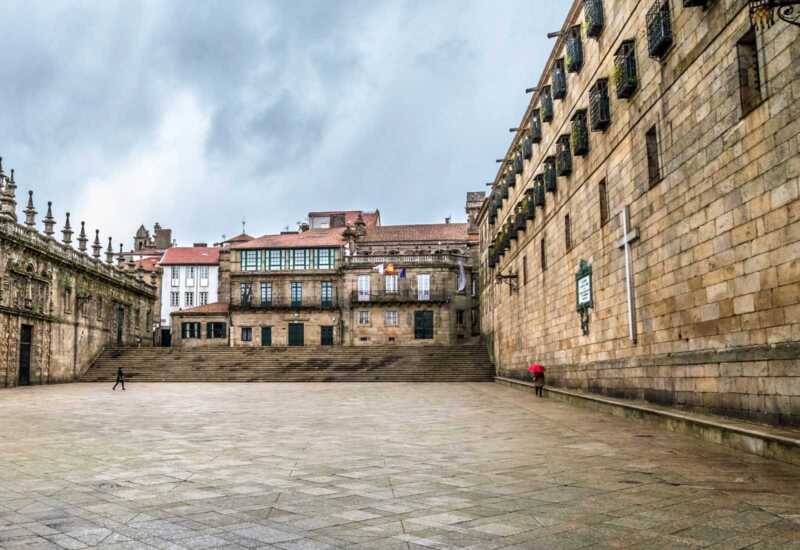
The Quintana Square in Santiago de Compostela
Leonard du Revenant
Leonard du Revenant, the son of a wealthy nobleman from Paris, murders his father in the hope of claiming his fortune. After being tried by the Duke of Burgundy, instead of being executed, he is ordered to walk the Camino de Santiago as penance.
During his journey along the French Route, he falls in love with a young innkeeper who is already engaged. Frustration drives him to commit two murders: he kills the young woman’s fiancé, kidnaps her, assaults her, and then kills her as well. Fearing execution, Leonard disguises himself as a Franciscan monk to avoid detection. He arrives in Santiago, but every inn is full, so he decides to sleep on the street, near the Cathedral. That night, in a dream, his father appears to him and says he has forgiven his crime but warns that he must atone for the lives he has taken. To achieve absolution, Leonard must wait for the souls of his victims to arrive in Compostela and grant him forgiveness.
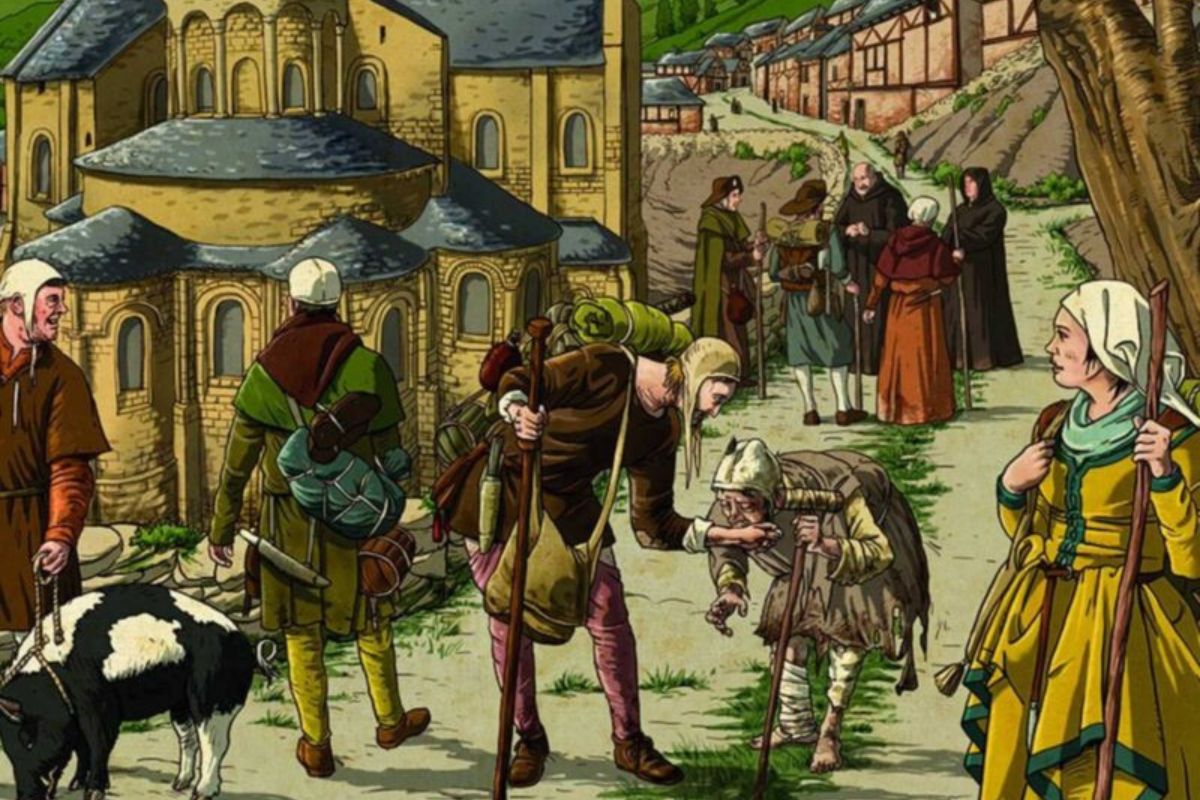
The Camino de Santiago has been the setting for many legends throughout its history
Frightened, Leonard tries to attack his father in the dream, but his father kills him first. Since then, Leonard appears night after night in Quintana Square, waiting for the souls of the young victims to forgive him so he can attain final absolution.
The Priest and the Nun
Finally, the most commonly told version to those who pass through the square is the story of the priest and the nun. According to the legend, a cleric from the cathedral and a nun from the San Paio de Antealtares convent, located on the opposite side of the square, had a secret romance. Tired of having to hide their love, the priest proposed that they flee Santiago together, away from prying eyes.
He arranged to meet her one night in the square, dressed as a pilgrim to avoid drawing attention. It is said that he waited for hours, but she never showed up. The shadow, in this case, represents the disguised priest, who could never accept losing his beloved and returns every night to wait for her.
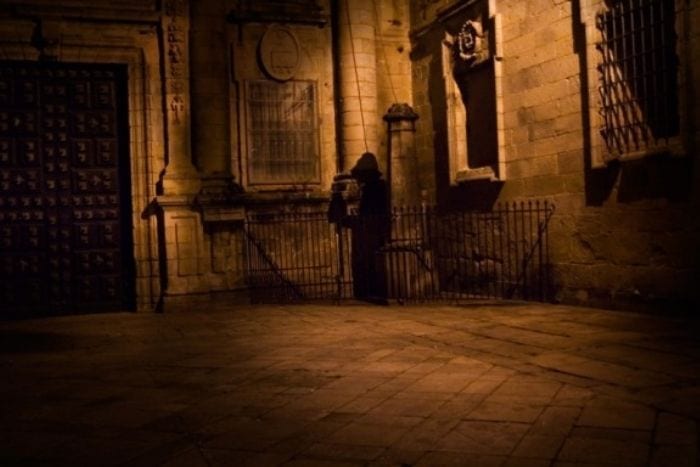
The famous shadow of the pilgrim
In reality, the shadow of the pilgrim in A Quintana Square is just one of the many legends of the Camino de Santiago and the city of Santiago de Compostela itself. It is said that the shadow accompanies us throughout the Camino, but we will only see it on the cathedral’s facade once night falls. This figure has undoubtedly become an icon of the city and one of its most photographed and popular images.
If you dare to embark on a Jacobean route, you will not only experience a unique journey but also immerse yourself in fascinating stories like that of the pilgrim’s shadow in A Quintana Square. Each step will bring you closer to Santiago, where legends like this come to life. Take on the Camino de Santiago and discover an experience filled with history, mystery, and redemption!

